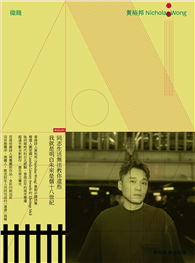This volume offers new perspectives on the tension between the rich patterns of language variation that emerge from comparative studies and the quest for simple theoretical primitives. The chapters explore the debate between Cartography and Minimalism: on the one hand, the need for detailed and articulated descriptions of the clausal architecture, and on the other, the endeavor to reduce the theoretical apparatus to fundamental computational mechanisms.
The first part of the book begins with a reflection on the goals of modern linguistic theory, and investigates the principles of human language, in an effort to subsume the regularities of particular grammars under a small set of morphosyntactic and semantic primitives. The second part examines the clausal structure - both the CP-layer and the IP-layer - from a comparative perspective, which directly relates to the fundamental questions of universality, linguistic variation, and learnability addressed in the first part of the book. With chapters written by world-leading linguists who analyze a wide range of old and new phenomena, the volume will be a valuable resource for researchers and students interested in theoretical linguistics and language development.| FindBook |
有 1 項符合
Rich Descriptions and Simple Explanations in Morphosyntax and Language Acquisition的圖書 |
 |
Rich Descriptions and Simple Explanations in Morphosyntax and Language Acquisition 出版社:Oxford University Press, USA 出版日期:2024-09-24 語言:英文 規格:精裝 / 432頁 / 普通級/ 初版 |
| 圖書館借閱 |
| 國家圖書館 | 全國圖書書目資訊網 | 國立公共資訊圖書館 | 電子書服務平台 | MetaCat 跨館整合查詢 |
| 臺北市立圖書館 | 新北市立圖書館 | 基隆市公共圖書館 | 桃園市立圖書館 | 新竹縣公共圖書館 |
| 苗栗縣立圖書館 | 臺中市立圖書館 | 彰化縣公共圖書館 | 南投縣文化局 | 雲林縣公共圖書館 |
| 嘉義縣圖書館 | 臺南市立圖書館 | 高雄市立圖書館 | 屏東縣公共圖書館 | 宜蘭縣公共圖書館 |
| 花蓮縣文化局 | 臺東縣文化處 |
|
|
圖書介紹 - 資料來源:博客來 評分:
圖書名稱:Rich Descriptions and Simple Explanations in Morphosyntax and Language Acquisition
內容簡介
作者簡介
Giuliano Bocci, Associate Professor, University of Siena, Daniele Botteri, Adjunct Professor, University of Siena, Claudia Manetti, Independent Researcher, Vincenzo Moscati, Associate Professor, University of Siena
Giuliano Bocci is Associate Professor in General Linguistics at the University of Siena. His theoretical and experimental research focuses on formal syntax, prosody, and their interplay with information structure. Daniele Botteri is Adjunct Professor of Linguistics and Sociolinguistics at the University of Siena where he earned his PhD in Cognitive Science in 2018. His research focuses on comparative syntax, language learning, and language teaching methodology. Claudia Manetti was Adjunct Professor of Linguistics and a Postdoctoral fellow at the University of Siena until 2020, and is currently a secondary school teacher. Her research interests mainly focus on language acquisition, multilingualism, and language teaching. Vincenzo Moscati is Associate Professor and Head of the Laboratory of Experimental Linguistics at the University of Siena. He works in theoretical linguistics and psycholinguistics, looking at language processing in adults, typically developing children, and children with Developmental Language Disorder.
|











